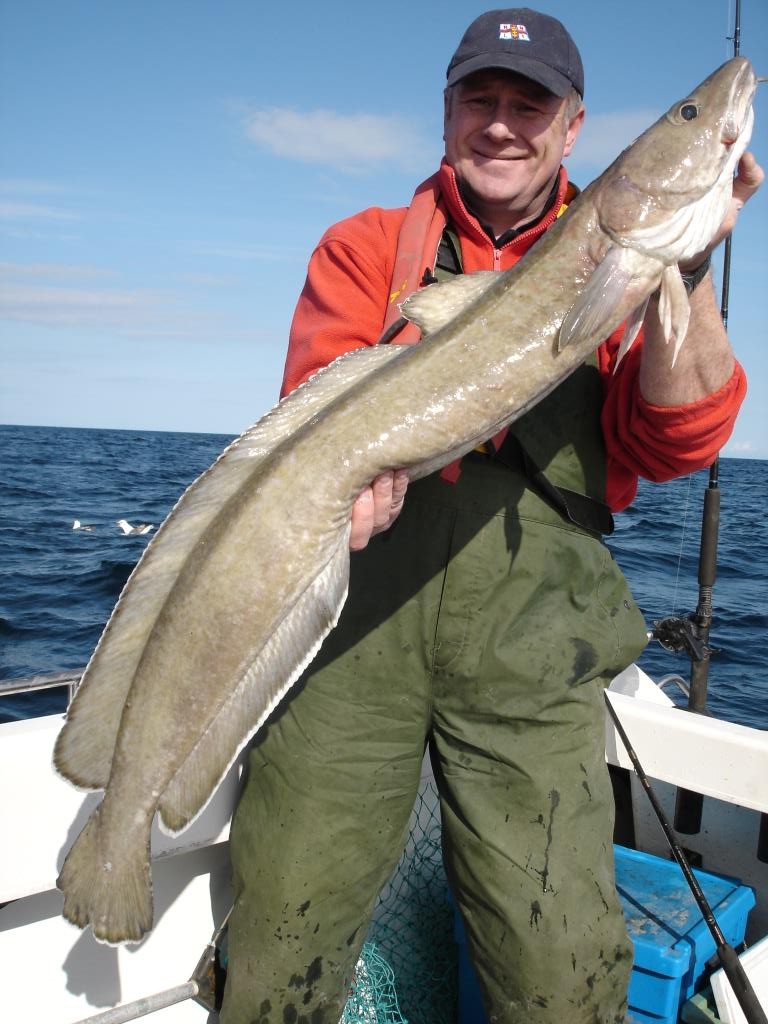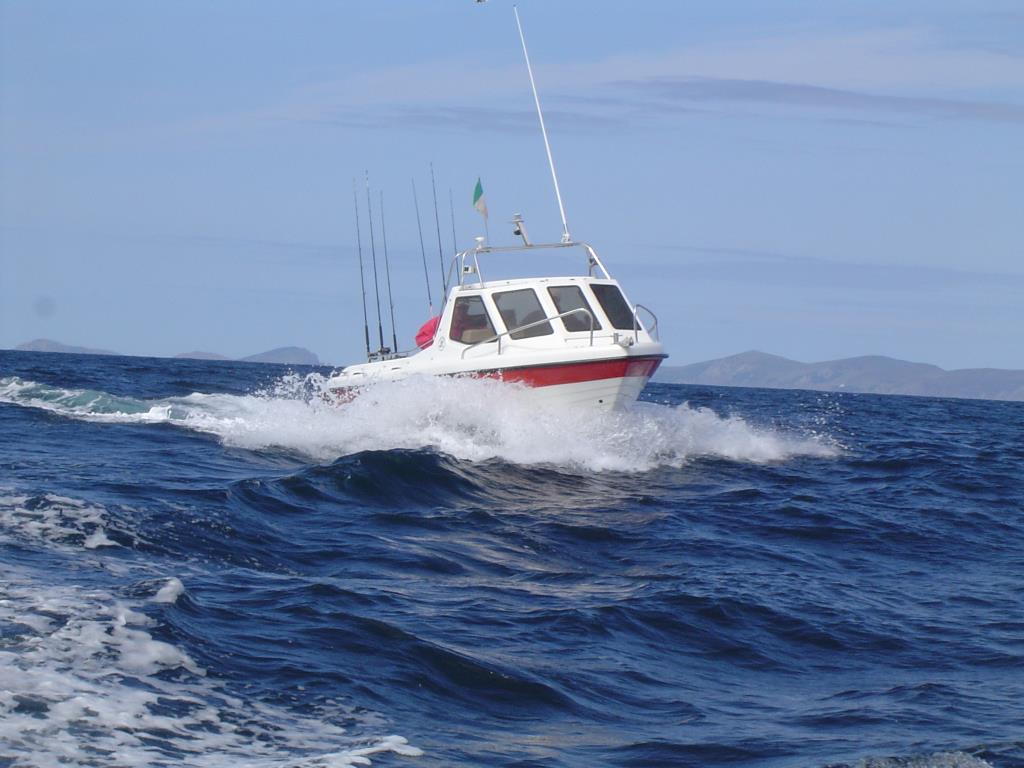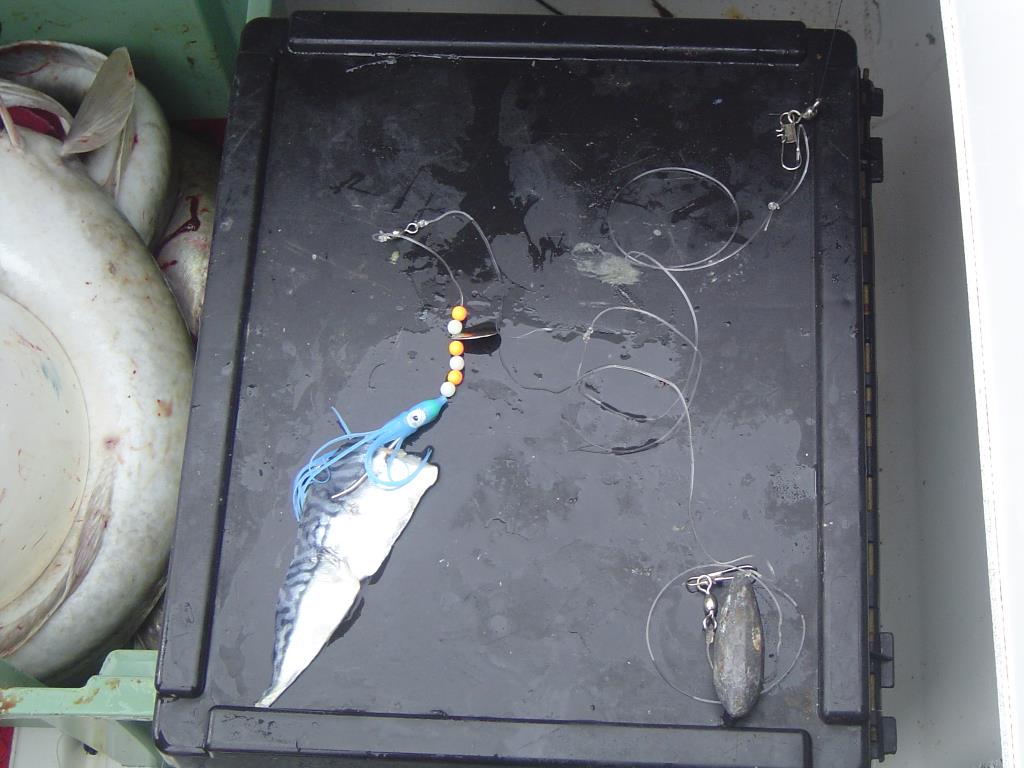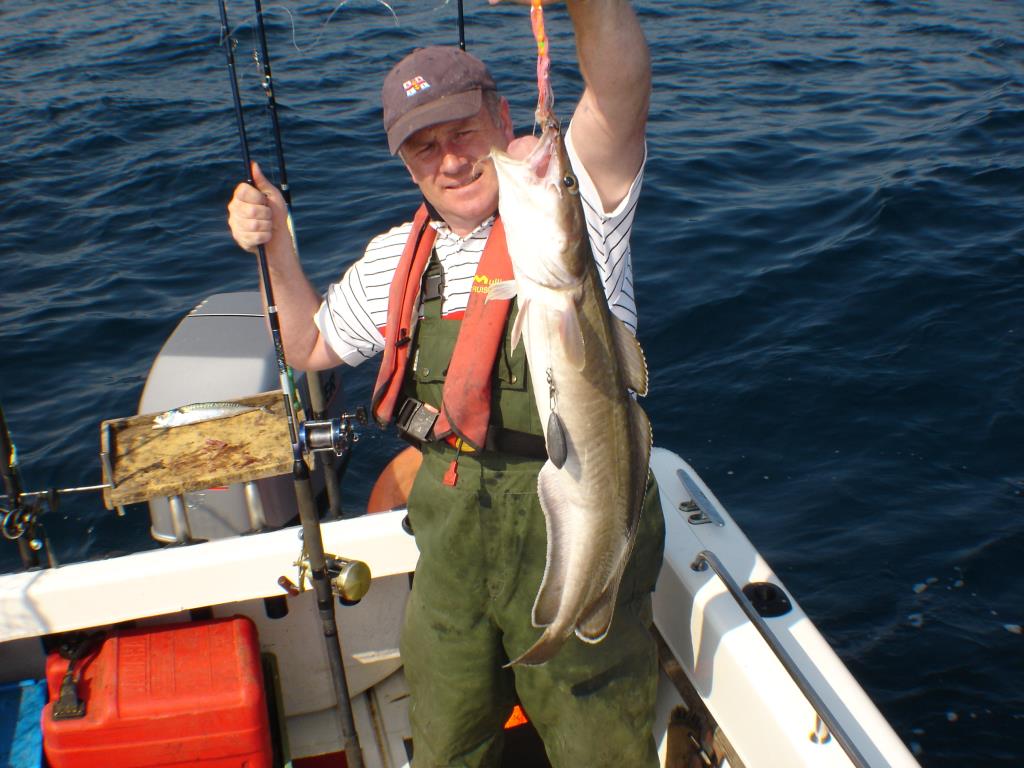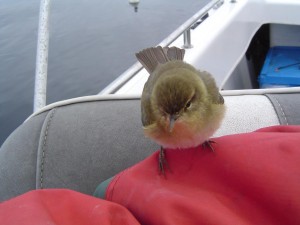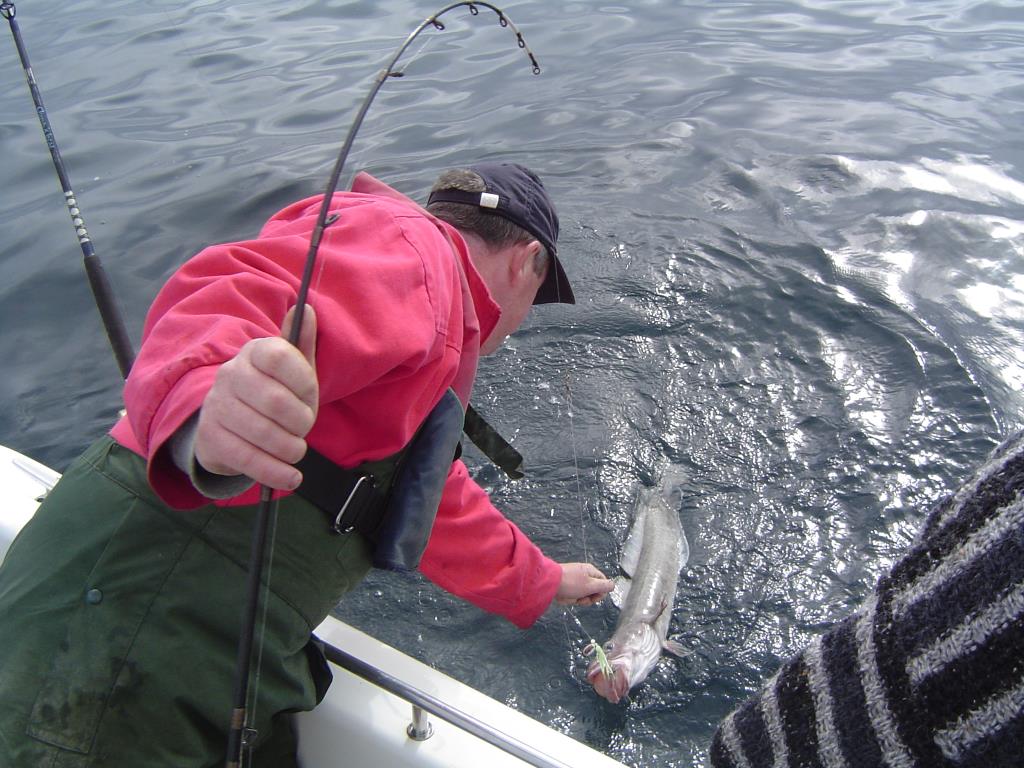* Ling on the Drift – The Dustbin of the Deep
Ling On The Drift.
A huge cavernous mouth with powerful jaws filled with an armoury of teeth, a strong but slender build makes the ling a super predator and super adversary. Often called the “dustbin of the deep” because of its willingness to take any bait, the ling survives by being first to strike at a passing meal. The competitive nature of a wreck’s ecosystem means the ling must compete for food with the free swimming pollack and coalfish and the cunning but slower conger. The ling is a ruthless predator. Not unlike the pike in looks and definitely like the pike in nature the ling is a supreme ambusher. Diver’s footage of wrecks show ling lying in wait in crevices within the wreck and hiding in the debris field around the wreck waiting to ambush unsuspecting prey.
In the late seventies the pioneers of Irish wreck fishing told tales of fishing virgin wrecks and being unable to catch any other fish because every bait presented was taken by ling. Eventually after thinning out the ling population congers began to appear in numbers as did cod. Such numbers of fish still abound. Many of our offshore wrecks hold huge numbers of ling. Each year the wrecks on the south coast yield a good number of specimen fish. If an angler is placed in close proximity to a wreck in deep water it is inevitable that ling will be caught.
Ling: Often called the Dusbin of the Deep!
The ling is a fast growing fish. Fish have been taken to over eighty pounds. The current Irish record was caught off the Cork coast in January 2004. A magnificent fish of 55lb. This fish shattered the previous record of over 48lb. The specimen weight is an attainable 25lb. Ling are scientifically special because of their fecundity, or egg laying abilities in layman’s language. A single ling can produce up to 60 million eggs each breeding season! Though not the prettiest of fish, ling is underrated by many as an eating experience. When cooked and presented well most would find it hard to distinguish between ling and cod, they are after all from the same family.
The easiest way to catch ling is to drift bait over wrecks that lie in deep water. The easiest way to tell you how to catch ling is to describe a typical springtime wrecking trip from East Cork:
A trip out of Guileen is always welcome. Guileen is a picturesque village in East Cork. There has been an angling club in Guileen for years. Long before Federations and Organisations, Guileen sea anglers took to their small open boats and fished the rich waters between Roches Point and Ballycotton.
As usual when wrecking an early start is a must. Apart from maximising the time spent fishing the early start usually allows the trip out to be taken in the calmest of seas. We have “SKUA” prepared the night before, all that remains is a stop for fuel as the sun appears in the east on a beautiful spring morning. Upon arrival at Guileen we launch quickly and are under way to our chosen wreck within minutes.
Conditions are excellent and thirty knots has us at our destination in under an hour. We’ve been to this wreck before so the layout of the wreck is set up on the GPS. This eliminates the need for searching and allows us to begin fishing immediately.
The plan is to drift the wreck with shads to see what fish are around and when we have located a pocket of fish we will drift the area with bait. The sounder shows a telltale line above the wreck, more than likely pollack. A drift with shads shows the guess to be correct, there are plenty of pollack though 8lbs is the best we produce. While shadding close to the wreck we take some small ling to 8lb. There are ling below, they are feeding, its time to tackle up and take on the big boys!
Simplicity is the key to catching ling on wrecks.
Simplicity is the key to catching ling on wrecks. Ling can be caught on lures, they can be caught on various baits by various tactics. By far the most successful method is bait, by far the most successful bait is mackerel. A study carried out a few years ago found that over 80% of specimen ling are caught on mackerel. As it’s early spring, we have frozen mackerel and some squid to tempt them with.
Tackle must be up to the job of fighting a possible specimen ling from 300ft of water. A rod of at least 12/ 20lb class is a necessity in depth. There is an abundance of rods that will suit and many don’t cost the earth, however experience would show that rods like the Daiwa Kensaki, Abu Suveran, Shimano Antares or Penn International will stand the test of time. Reels in the class of an Abu 7000, Penn 535 or Shimano Calcutta 700 are perfect. With the depth of water involved braid is a must on all reels.
One bait one fish – Single paternosters are the best wrecking tool
It pays to be particular about terminal tackle to be used on wrecks. It also pays to keep it simple. When drifting wrecks my preferred trace is a single hook paternoster. A trace of about three or four feet long with a single twelve inch snood. The trace is made made from at least 60lb up to 100lb supple mono. The single hook is an O’Shaughnessy 8/0. An addiction to muppets, beads and spinner blades ensures an attractive looking presentation! The only quirk to be trace is a 2/0 swivel tied into the snood this allows for the spinning and tearing of a good ling or conger – Handy but not a necessity. The single hook trace cuts down losses on tackle hungry wrecks. More importantly, when you hit a fish you know its only one fish. When ling are feeding its quite possibly for a double hook up, it happens regularly at anchor. While a double hook up seems like a great bonus, the hope of one thirty pound fish and dreams of a specimen badge have often faded with the sight of two fifteen pounders coming up fro the deep. As usual leads are chosen to suit the speed of drift and are rarely more than 10oz.
It is important to present your bait well. Flowing baits work best. Strips of mackerel are perfect. Ling are not fussy about the size, though sometimes when the fish are mouthing the bait it pays to use smaller baits to get increased hookups. Flappers work well In summertime when bait is plentiful, especially “joeys”. A complete half side of mackerel including half the head will ooze a trail of scent and pieces of fish that can be irresistible.
Our first drift with bait produces ling to 12lb. The takes are very light, the fish appear to be mouthing the bait. On the next drift I size down my bait and immediately get a hit. Upon getting a bite it is best to wind the rod tip to the water. When the weight of the fish can be felt a good brisk strike will ensure a good hook up. Ling can fight well. They normally will attack the bait and run. Pressure must be applied to prevent the fish from reaching “the steel”. Then its down to a pump and wind to the surface. Ling must never be given slack line during the fight. They can and will slip the hook readily. The fight is quite unique, a constant series of nodding dives in between some alarming tearing, real heart in the mouth stuff! Normally as the fish nears the surface its swim bladder will blow and the fight is as good as over. It is best to take your time reeling in the fish. On rare occasions if the retrieve is slow enough the fish will fight all the way to the surface, its bladder will stay down and a smaller fish may even be returned alive.
When ling are feeding the fishing can be frenetic. It is normal to have both rods into fish at the same time. This makes for interesting landings as fish have to be lifted by hand into the boat rather than netted. We keep our drifts as short as possible. As soon as the bites decrease and the sounder shows clean ground we finish the drift. After each drift we drive back along the trail on our plotter enabling us to position the boat over the most productive areas of the wreck. This is where the small boat comes into its own. It is far easier and faster to move around the wreck. Modern plotters allow the positioning of the boat precisely.
We have had over twenty drifts when Hugh hooks and drops a good fish. As soon as the fish gets off he drops the trace back to the bottom immediately. If the fish has not stolen the bait it will sometimes come back for another go. It does and a few minutes later our best fish of the day comes to the net: a super 22lb fish. When the fish is on the deck it is best to unhook with a t-bar rather than with your fingers, not that the fish will bite, but any slip against those teeth will result in a gash that will bleed for hours! The ling also has some teeth at the back of the throat. These teeth can cut when a hand is placed into the gill for carrying or picture taking.
The GPS screen is hard to read at this stage, the area around the wreck is a mass of black lines as our plotter shows we have made a lot of drifts. A check on in the hold shows that we are reaching our limit of fish. We are also reaching our limit physically! Wreck fishing is hard work! We have enough fish for our own needs and some more besides. There is little point in filling the boat with fish. At least what fish we have caught have finished spawning. In the early part of the year many ling will be filled with roe. For that reason it is best to try not to fish for them until April / May.
As I drop down for another pass on the wreck there is a flash in front of my eyes and something hits my shoulder… a bird, a land bird! This is one of those lighter moments you get while fishing, the small bird, we later identify it as a chiff chaff, has decided to take a breather on its migration from North Africa. It stays on the boat for fifteen minutes before resuming its trip to shore.
The fishing is coming to an end but our day is far from over. We head back for Guileen without stopping. We trailer the boat, fillet the fish and then stow the gear for the tow home. All that remains is to call to the Guileen Arms the local pub which doubles as a tackle shop. Another successful days angling is completed. Thoughts move to high summer when bait will be plentiful and fish will feed with abandon. Time to anchor wrecks for the mainstay of Irish deep-sea angling: the Conger…
Drifting wrecks for Ling at a glance:
Rods: Light 20/30lb class.
Reels: Abu 7000 / Calcutta 700/ Penn 545.
Line: Braid. 30 to 50lb breaking strain.
Trace: Single hook paternoster, 100lb Line, 8/0 hook, Muppet etc.
Best Bait: Mackerel.
Locate and mark the wreck.
Search for fish on the wreck.
Shortest drifts possible.





